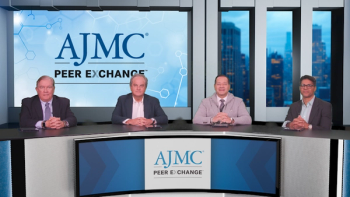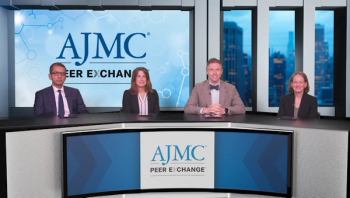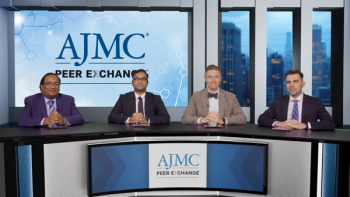
Challenging Fixed Age Cut-Offs for AML Treatment, Clinical Trials
Research challenges age cut-offs in AML treatment, advocating for flexible, individualized approaches based on continuous age assessment.
Using chronological age cut-offs—such as 60 years—to divide patients with
As patients age, their AML survival worsens, making age a major factor when choosing the best treatment options. With better targeted therapies and drug combinations improving outcomes, there is now a need for age-associated flexibility in treatment choices and trial eligibility criteria.
“Although AML predominantly affects older patients, it occurs in people of all ages, and patient outcomes strongly correlate with factors like age, race, and the ability to do daily activities without help, as well as AML-associated genetic abnormalities,” senior author Ann-Kathrin Eisfeld, MD, director of the Clara D. Bloomfield Center for Leukemia Outcomes Research at The Ohio State University Comprehensive Cancer Center – Arthur G. James Cancer Hospital and Richard J. Solove Research Institute (OSUCCC – James),
The Flaw in Fixed Age Cut-Offs
The established practice of dividing patients with AML into "younger" patients, who are often considered eligible for intensive chemotherapy, and "older" patients, who are often routed toward less intensive or palliative care, is based on observations that increasing age in AML is often associated with decreasing fitness and increasing comorbidities.
Researchers at OSUCCC – James analyzed mutational patterns and survival outcomes in 2823 patients (18 to 92 years) treated with frontline treatment protocols of the Cancer and Leukemia Group B (now Alliance for Clinical Trials in Oncology) and the AML Cooperative Group.
After analyzing data across 5-year age increments, the researchers rejected the notion of dividing patients into older and younger groups. They found no specific age cut-off identified distinct shifts in either the patterns of genetic alterations or overall survival (OS) consistently across different molecular subsets.
They suggest that age can provide further risk stratification by being considered in a continuous fashion instead of classifying patients into precise age groups.
“Choosing a precise age cut-off such as 39 years for separating adolescents and young adult patients from older adults, or 59 years for identifying ‘younger’ and ‘older’ AML patients, does not seem to be supported by the results of our analyses,” coauthor Karilyn Larkin, MD, a member of the Leukemia and Hematologic Malignancies Program at the OSUCCC – James, said.2 “While our intention was to assess whether defined age cut-offs are supported by patterns of genetic alterations, our data tend to refute the existence of any uniform cut-offs across the age spectrum.”
With age having a continuous impact, the research also showed that there was an almost linear shortening of OS with advancing age across the entire patient cohort. Crucially, this age-associated worsening of OS persisted within the established 2022 European LeukemiaNet (ELN) genetic-risk categories (favorable, intermediate, and adverse).
For instance, the estimated 5-year OS rate among patients with ELN favorable genetic risk was 73% for the youngest patients (18-24 years) but plummeted to just 21% for those 75 years or older. Similarly, in the ELN intermediate-risk group, 5-year OS ranged from 53% in the youngest adults to 4% in those older than 75 years.
“While this study sought to challenge the relevance of chronologic age in AML, we have in fact shown that age provides further risk stratification to patients already classified by 2022 ELN in an almost continuous fashion, with substantive differences in OS between the youngest and oldest patients belonging to the same 2022 ELN genetic-risk group,” the authors wrote.
Integrating Molecular and Chronological Risk
The study provided a granular look at how the mutational landscape evolves across the lifespan:
- Mutations in genes like ASXL1, BCOR, TET2, and TP53 showed an increasing frequency with age.
- Alterations in genes such as CEBPA, GATA2, and KIT decreased with age.
Furthermore, the negative prognostic impact of age was found to be significant even among patients harboring mutations targeted by newer therapies, such as IDH1, IDH2, and FLT3-ITD. Simply qualifying a patient based on a targetable mutation is not enough; their chronological age still independently dictates a worsening prognosis, thereby reinforcing the complexity of true individualized risk.
References
1. Cusan M, Larkin K, Nicolet D, et al. Multi-dimensional analysis of adult acute myeloid leukemia cross-continents reveals age-associated trends in mutational landscape and treatment outcomes (Acute Myeloid Leukemia Cooperative Group & Alliance for Clinical Trials in Oncology). Leukemia. Published online September 19, 2025. doi:10.1038/s41375-025-02644-0
2. Study suggests need for more age-associated flexibility in treating AML. News release. The Ohio State University Comprehensive Cancer Center. November 3, 2025. Accessed November 14, 2025.
Newsletter
Stay ahead of policy, cost, and value—subscribe to AJMC for expert insights at the intersection of clinical care and health economics.











































